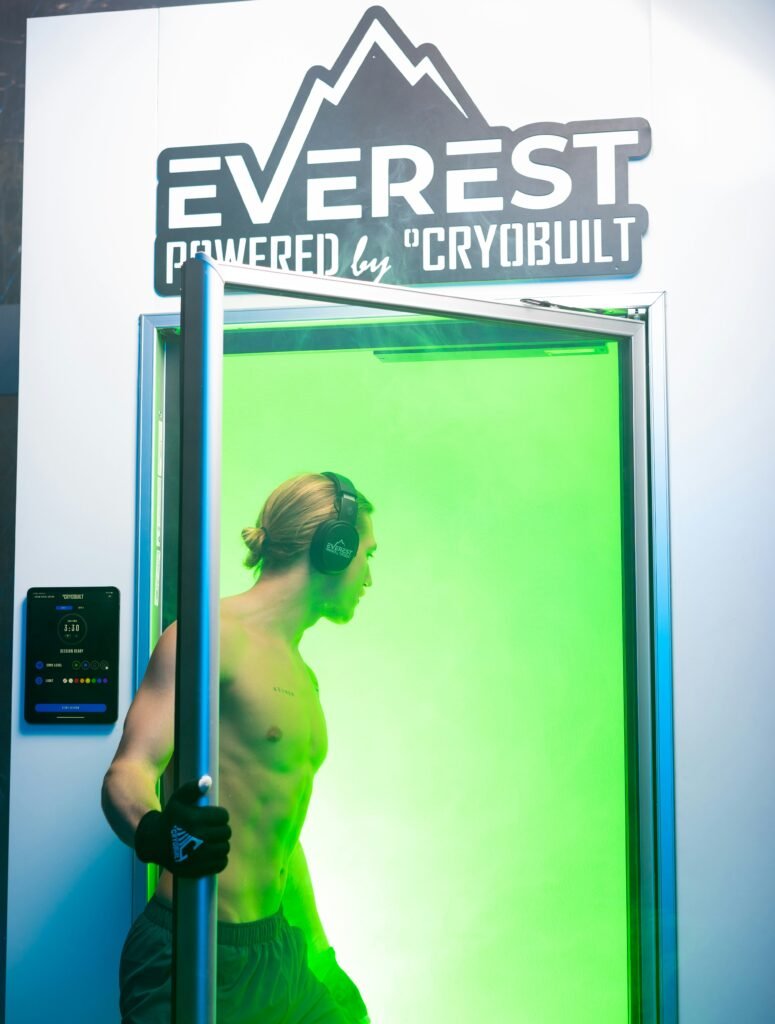
Have you ever considered jumping into an ice bath? It might sound like a chilly challenge, but many swear by its health benefits. Let’s take a closer look at this trend to see if ice baths are as healthy as some people claim.
What is an Ice Bath?
An ice bath, or cold water immersion, involves sitting in a tub filled with ice water for a short period. This practice is often used by athletes after intense workouts to reduce muscle soreness and speed up recovery. The temperature typically hovers around 50°F to 59°F (10°C to 15°C). Although ice baths have gained popularity recently, they have been utilized in various cultures for centuries.
How Does Cold Water Impact the Body?
When your body is exposed to cold water, several physiological responses occur. Initially, the cold constricts blood vessels and decreases blood flow to the muscles, which may help reduce swelling and inflammation. Once you exit the ice bath and start to warm up, your blood vessels dilate again, leading to an increase in blood flow. This process can help flush out metabolic waste and bring nutrients back to the muscles, potentially aiding recovery.
Benefits of Ice Baths
1. Reduced Muscle Soreness
One of the most commonly cited benefits of ice baths is their ability to alleviate muscle soreness post-workout. Cold water immersion can effectively numb pain and reduce inflammation, allowing you to feel better faster after intense physical activity.
2. Enhanced Recovery
Athletes often use ice baths to enhance recovery times between training sessions. By reducing metabolic waste and inflammation, ice baths can help you bounce back quicker, which is crucial if you have competitions or strenuous activities lined up.
3. Improved Circulation
While it might seem counterintuitive, ice baths can improve circulation. The initial constriction of blood vessels is followed by dilation, which increases blood flow back to the muscles. Improved circulation helps deliver oxygen and nutrients, which can facilitate cellular repair.
4. Potential Mood Booster
Cold exposure may trigger the release of endorphins, the body’s natural mood elevators. This can help improve your mood and alleviate feelings of sadness or anxiety. The shock from the cold can serve as a stimulant, leaving you feeling invigorated.
5. Strengthened Immune System
Some studies suggest that regular cold exposure can enhance the immune system’s efficacy. When your body is exposed to cold temperatures, it may produce more white blood cells, enhancing your body’s ability to fight off infections.
6. Increased Metabolic Rate
Cold exposure can increase your metabolic rate as your body works to maintain its core temperature. Over time, this could potentially contribute to weight loss or weight management, depending on your overall lifestyle and dietary habits.

Risks and Considerations
1. Hypothermia
One of the primary risks associated with ice baths is hypothermia, a dangerous drop in body temperature. If you stay in an ice bath too long or the water is too cold, your body can lose heat faster than it can produce it.
2. Nerve Damage
Prolonged exposure to cold temperatures can lead to nerve damage. You should limit your time in an ice bath to 10 to 15 minutes to minimize this risk, and always pay attention to how your body feels.
3. Cardiovascular Strain
For those with heart conditions or elevated blood pressure, the sudden shock of cold water can be dangerous. The initial constriction of blood vessels puts strain on the cardiovascular system, so it’s essential to consult your physician if you have any underlying health concerns.
4. Discomfort and Pain
Ice baths can be quite uncomfortable. The shock of cold water can lead to unpleasant sensations and even pain, especially if you are not acclimated to it. It might take some time to get used to the experience.
5. Individual Variation
The efficacy and safety of ice baths can vary from person to person. What works for an athlete might not be suitable for someone with a different body type or fitness level. It’s crucial to listen to your body and adjust your approach accordingly.
How to Safely Take an Ice Bath
1. Prepare Your Materials
Have your ice and water ready before you start. Aim for a bathtub or large container you can comfortably sit in. Fill it with cold water and add ice until you reach the desired temperature.
2. Set a Timer
Establish a time limit before you get into the bath. Start with shorter durations (around five minutes) and gradually work up to 10 or 15 minutes as you become more accustomed to the cold.
3. Ease Into It
Rather than jumping in all at once, consider easing yourself in. Start with your feet and gradually lower your body into the ice bath. This can help minimize the shock and make the experience more pleasant.
4. Warm Up Gradually Afterward
Once you exit the ice bath, be sure to warm up gradually. Avoid jumping into a hot shower immediately, as this can be a shock to your system. Instead, wrap yourself in warm blankets or drink a warm beverage to help your body return to a normal temperature.
5. Listen to Your Body
Pay attention to your physical sensations while in the ice bath. If you begin to feel excessively cold, numb, or in pain, it’s time to get out. Your comfort and safety should always come first.

Alternatives to Ice Baths
If the thought of an ice bath doesn’t appeal to you, there are other options for cold therapy and recovery techniques you might consider.
1. Cold Showers
A cold shower can provide similar benefits to an ice bath without the extreme cold. Start with lukewarm water and gradually turn down the temperature to find a comfortable coldness.
2. Cryotherapy
This method involves exposing your body to extremely cold temperatures for a short duration, often in a specialized chamber. Cryotherapy provides a more controlled environment compared to traditional ice baths.
3. Cold Packs
Using ice packs or gel packs on specific body areas can also help reduce soreness and inflammation. This method allows for targeted treatment and is more manageable for those who dislike full-body cold exposure.
4. Contrast Water Therapy
Alternating between hot and cold water can stimulate circulation and recovery. You can achieve this with a hot bath or shower followed by a brief stint in cold water.
Who Should Consider Ice Baths?
Athletes and Fitness Enthusiasts
If you’re involved in sports or rigorous training, you may want to consider incorporating ice baths into your recovery routine. The potential benefits for muscle recovery and soreness relief can enhance your performance.
Individuals with Chronic Pain
Those dealing with chronic pain, particularly from sports injuries or conditions like fibromyalgia, might find relief from regular ice bathing. Cold therapy can help numb pain and reduce inflammation over time.
People Seeking Mental Health Benefits
For those looking to improve their mood or energy levels, the invigorating shock of cold exposure may provide a therapeutic boost. If you struggle with feelings of anxiety or sadness, trying an ice bath could be beneficial.
Fitness Professionals
Coaches and trainers may find that recommending ice baths can improve their athletes’ performance and recovery rates. Sharing this knowledge can help your clients reach their goals.

Tips for Newbies
Start Slow
If you’re new to ice baths, start with shorter durations and milder cold temperatures. Your body will need time to adjust to the experience.
Stay Hydrated
Cold temperatures can lead to dehydration, especially if you are sweating before entering the bath. Ensure you drink enough water before and after your session.
Have a Plan
Prepare an after-action plan, such as warming up and rehydrating. Knowing what you’ll do after the bath can help you feel more at ease.
Gauge Your Comfort Level
If you find yourself dreading the ice bath, evaluate whether it’s worth incorporating into your routine. There’s a variety of recovery techniques to choose from, and you should find something that works for you.
Conclusion
So, are ice baths healthy for you? The answer is yes, but with a caveat. Ice baths can offer numerous benefits, particularly for athletes looking to speed up recovery and reduce muscle soreness. However, they also come with risks and may not be suitable for everyone. It’s essential to listen to your body and consult with a healthcare professional if you’re considering this method as part of your routine.
Whether you decide to hop into the ice bath or choose alternative methods for recovery, finding what feels best for you is key. The journey to good health is personal, and what works for one person may not work for another. Stay curious and attentive to your body as you navigate your wellness path.
